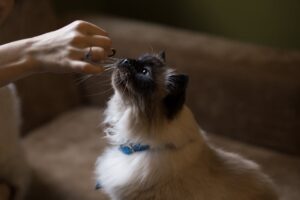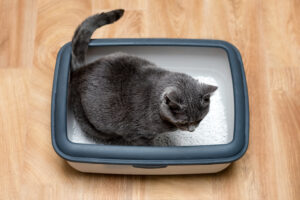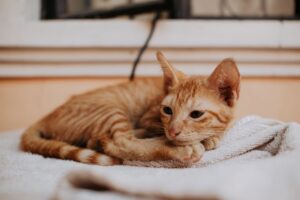Cat trees and towers aren’t just furniture but essential for enriching your feline friend’s life. These vertical playgrounds cater to a cat’s natural instincts to climb, scratch, observe, and relax. If you’re looking to provide your furry companion with the ultimate indoor adventure, this guide will help you choose the perfect cat tree or tower.
Why Cat Trees and Towers Matter
- Physical Health: Climbing and jumping on a cat tree promotes exercise, helping maintain a healthy weight and muscle tone. Scratching posts integrated into the design encourage healthy claw maintenance and discourage destructive scratching on your furniture.
- Mental Stimulation: Multiple levels, dangling toys, and hiding spots keep cats mentally engaged, preventing boredom and associated behavioral problems.
- Territory and Security: Cats are territorial creatures. A tall cat tree offers a high vantage point, providing a sense of security and control over their surroundings.
- Stress Reduction: Having a dedicated space to retreat and relax can significantly reduce stress in cats, especially in multi-cat households or busy environments.
Top Factors to Prioritize When Selecting a Cat Tree
- Size and Stability: Select a tree that’s proportionate to your cat’s size and activity level. Larger, more active cats need a sturdy structure with a wide base to prevent tipping.
- Materials: Look for durable materials like sisal rope for scratching posts, soft plush fabrics for perches, and sturdy wood or metal frames. Avoid materials treated with harmful chemicals.
- Height: Cats love to climb! A tall tree with multiple levels will satisfy their natural instincts and provide varied viewpoints.
- scratching posts: Include a variety of scratching post textures and angles to cater to different scratching preferences.
- Perches and Platforms: Multiple platforms offer places to rest, nap, and observe the world from different heights. Consider enclosed perches for added security.
- Hanging Toys: Dangling toys provide hours of entertainment. Look for toys that can be easily replaced when they wear out.
- Condos or Hiding Spots: Enclosed spaces give cats a safe haven to retreat to when they want some alone time.
- Ease of Cleaning: Choose a cat tree with removable and washable covers to keep it hygienic.
Top Cat Tree Styles
- Basic Cat Trees: Simple designs with a few scratching posts and platforms, ideal for kittens or cats with limited space.
- Multi-Level Cat Towers: Tall structures with multiple levels, perfect for active cats and multi-cat households.
- Cat Condos: Trees with enclosed spaces for hiding and napping.
- Wall-Mounted Cat Trees: Save floor space and offer climbing opportunities with wall-mounted designs.
- Cat Trees with Hammocks: Hammocks provide a comfortable and relaxing spot for your cat to lounge.
Tips for Introducing a New Cat Tree
- Place it in a familiar area of your home.
- Sprinkle catnip on it to attract your cat.
- Play with your cat near the tree to encourage exploration.
- Reward your cat with treats for using the tree.
Investing in a well-chosen cat tree or tower is a gift that keeps on giving, enriching your cat’s life and providing endless entertainment for both of you.
Top-Rated Cat Trees and Towers: Our Picks for Every Feline
To make your decision even easier, we’ve rounded up some of the best cat trees and towers on the market, catering to various needs and preferences:
For the Active Climber:
- Go Pet Club 62-Inch Cat Tree: This towering structure boasts multiple levels, scratching posts, perches, and even a hammock for ultimate relaxation. It’s perfect for energetic cats who love to explore.
For the Scratch-Happy Feline:
- Frisco 52-Inch Faux Fur Cat Tree & Condo: This multi-level tree features a variety of scratching post textures, ensuring your cat will find the perfect spot to satisfy their scratching urges.
For the Shy Cat:
- AmazonBasics Cat Condo Tree with Hammock Bed: This cozy condo provides a secluded retreat for shy or anxious cats, offering them a safe space to de-stress and unwind.
For Multiple Cats:
- Feandrea 71-Inch Multi-Level Cat Tree: With its expansive design, this tree offers ample space for multiple cats to climb, play, and coexist peacefully.
For Smaller Spaces:
- On2 Pets Cat Tree with Leaves: This compact yet stylish tree fits easily into smaller apartments or rooms, providing your cat with essential vertical territory without taking up too much floor space.
For the Budget-Conscious:
- Yaheetech 37.5-Inch Cat Tree Activity Center: This affordable tree doesn’t skimp on features, offering multiple platforms, scratching posts, and a cozy condo for your cat to enjoy.
Maintenance Tips
- Regular Cleaning: Vacuum the tree regularly to remove hair and debris. Spot clean stains with a pet-safe cleaner.
- Replace Worn Parts: Inspect the tree regularly and replace any worn-out scratching posts or dangling toys.
- Tighten Screws: Check the stability of the tree periodically and tighten any loose screws to ensure safety.
Conclusion
Choosing the best cat tree or tower involves considering your cat’s individual needs, preferences, and your available space. By investing in a high-quality cat tree, you’re not only providing your feline friend with endless hours of entertainment but also promoting their physical and mental well-being. So go ahead and surprise your furry companion with the ultimate indoor adventure!






